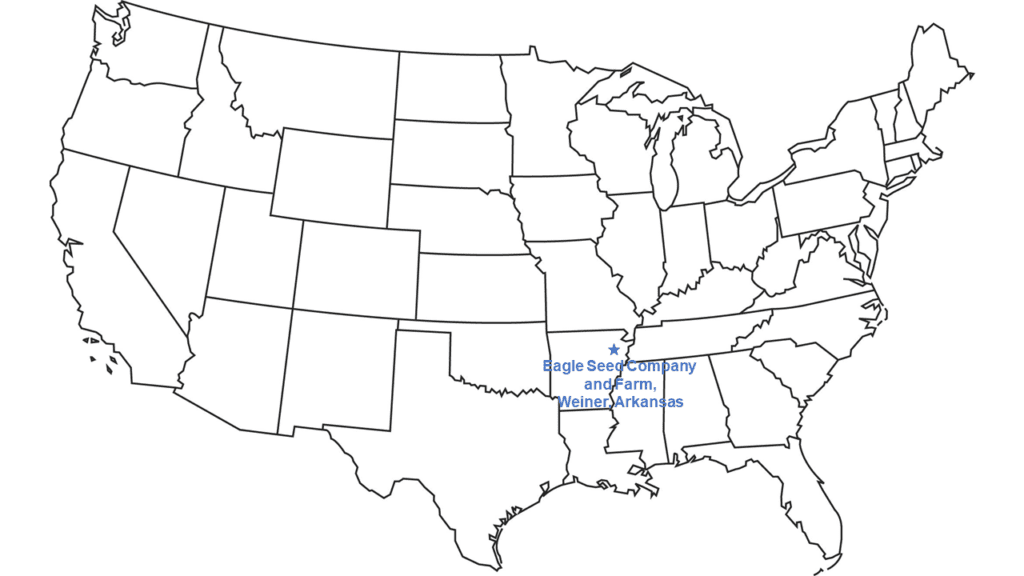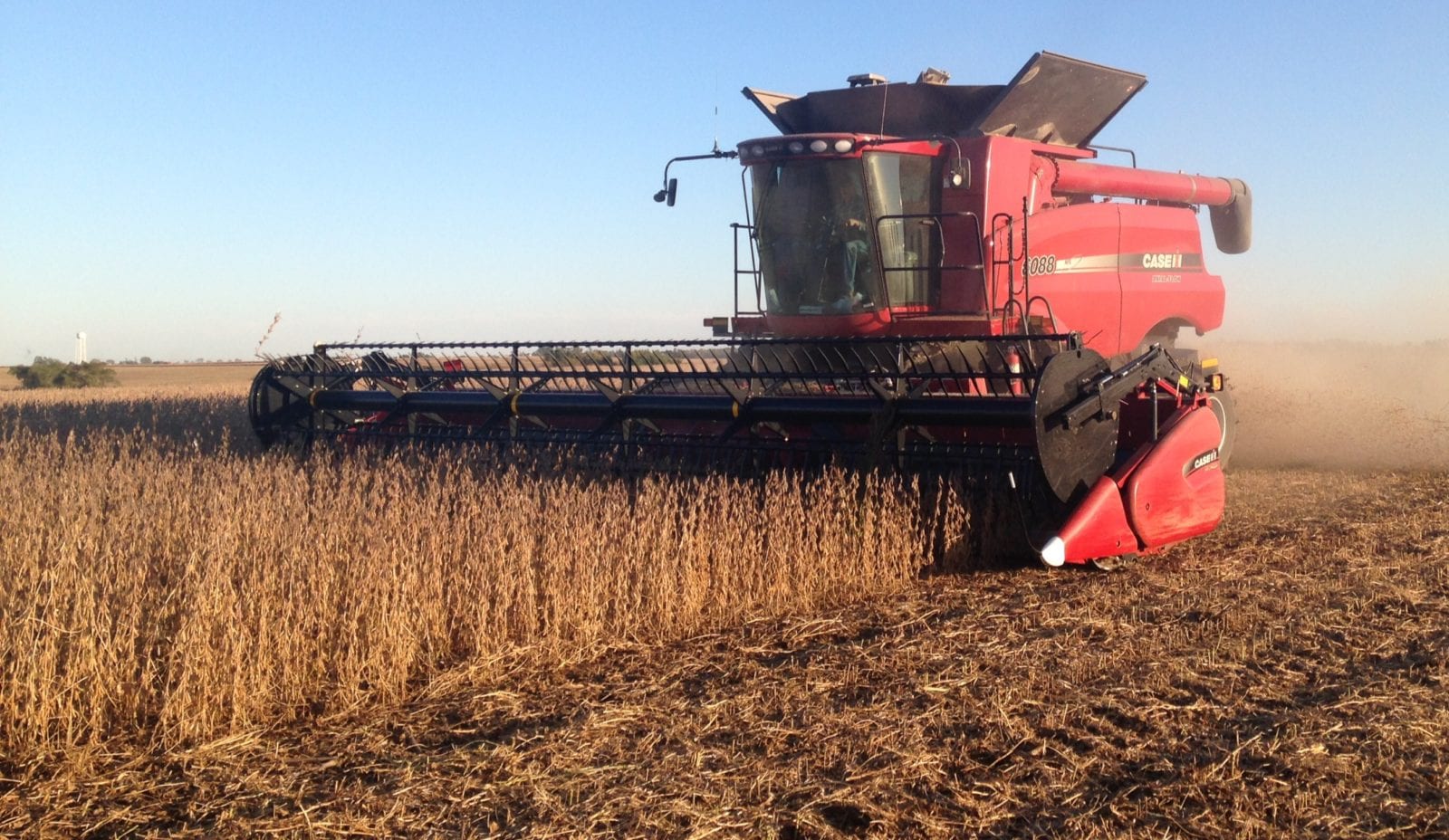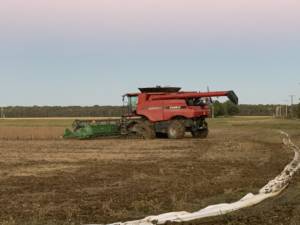 Breeding new soybean varieties and harvesting soybeans for seed adds unique elements to harvest for Eagle Seed Company. We wrapped up rice harvest during the first full week of October, and started harvesting the earliest soybean varieties in our breeding trial plots. But soybean harvest – both for our breeding program and commercial seed production – got seriously underway a couple weeks later.
Breeding new soybean varieties and harvesting soybeans for seed adds unique elements to harvest for Eagle Seed Company. We wrapped up rice harvest during the first full week of October, and started harvesting the earliest soybean varieties in our breeding trial plots. But soybean harvest – both for our breeding program and commercial seed production – got seriously underway a couple weeks later.
Harvesting our soybean breeding plots is a critical step in our development of new varieties. We do much more than just cut the soybeans. We take notes on agronomic characteristics of each trial both with and without leaves. We look for agronomic factors like how beans come out of pods, the potential for shatter, disease pressure, green stem and more. We record quality factors like seed size, hilum color, tendency to have Cercospora blight lead to purple seed stain and others, especially in our food-grade development lines. We examine seed and podwall color and cast – gray compared to tawny – to ensure genetic purity. We try to pinpoint an experimental plot’s maturity by comparing it to known check plots planted throughout our research plots. And, of course, we monitor yield.
Most of our research plots are about 6 meters, or 20 feet, long, and 1.5 meters, or 5 feet, wide. Maintaining purity of each trial and preventing the comingling of different experimental lines is a top priority, and the combine is designed to help with this. Air moves the soybeans out of the plot combine, rather than an auger, like typical combines.
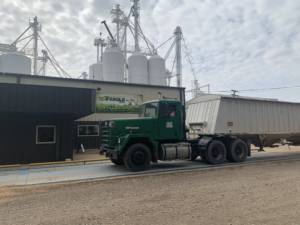 Our research plot combine will cut just one plot at a time. Then, in the 1.5-meter, or 5-foot, alley that separates each trial plot, the combine has time to fully thresh the plot, and unload the soybeans into the cotton bag labeled for that plot. The air prevents soybeans from getting caught in the machine and stored with another plot’s yield. Once that plot is bagged and tagged and the plot combine is empty, we can move on to the next plot.
Our research plot combine will cut just one plot at a time. Then, in the 1.5-meter, or 5-foot, alley that separates each trial plot, the combine has time to fully thresh the plot, and unload the soybeans into the cotton bag labeled for that plot. The air prevents soybeans from getting caught in the machine and stored with another plot’s yield. Once that plot is bagged and tagged and the plot combine is empty, we can move on to the next plot.
As an experimental line proves its potential value to advance, we plant larger plots with that seed to increase the amount we have to watch the following year. These plots range from as small as .1 hectare, or .25 acres, to as large as about 2 hectares, or 5 acres. But regardless of size, all breeding program plots are harvested with the research combine and careful attention to prevent comingling, especially between GMO and non-GMO varieties.
We also carefully monitor the moisture at harvest. We prefer to cut beans at 13 to 14% moisture, but the small plots can be harvested at higher moisture levels when necessary. We preserve quality by using fans to move air through the bags of soybeans collected from those small plots as needed. But we never use heat because we don’t want to damage soybean quality.
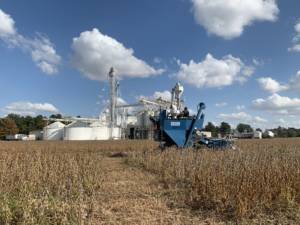
We need about 14 days of good weather to harvest all our breeding plots, but as we get later into October and November, we are more likely to be interrupted by rain.
Our commercial seed soybean harvest in our larger fields got underway about the same time as our breeding plot harvest. Our priorities for these soybeans are quality, purity and germination rate. That has impacted how we have handled them all season.
Unlike most farmers, we planted our longest maturity soybeans first, so they would mature in slightly cooler weather. We planted our shortest maturity soybeans last, but because soybeans are photo-sensitive, these are still the first varieties we harvest. Planting in this order costs us some yield, but we give that up to ensure high seed quality for the farmers that will plant these soybeans commercially next year.
We controlled weeds as completely as possible all season, to minimize the weed seed harvested with the soybeans. We also have buffers between soybean varieties to ensure seed consistency.
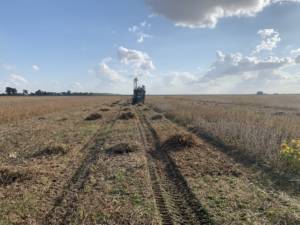 When we harvest, we do cut one variety at a time. Then we clean the combine thoroughly with an air compressor. We clean every part of the combine, from the head to the grain tank, which can get tedious by the time we finish 20 different varieties.
When we harvest, we do cut one variety at a time. Then we clean the combine thoroughly with an air compressor. We clean every part of the combine, from the head to the grain tank, which can get tedious by the time we finish 20 different varieties.
We deliver our soybeans to our seed plant, where we store them for cleaning. We use conveyors and elevators to move soybeans into storage rather than augers, again to protect seed quality. We send samples of these soybeans to a state laboratory to test them for germination rate before we clean them. Germination rate is usually a result of environmental factors from the growing season. When we have unexpectedly low germination rates, we won’t sell that as seed. We will either keep it to grow more seed for that variety ourselves the following season, using a higher germination rate, or we will treat it like commodity soybeans.
And we are already planning for next year. My wife is working with other soybean breeders to understand trends. We are determining what we may want our seed growers to raise for us next year. And we recently put in a cover crop research trial, which is off to a great start.
We are harvesting seed soybean farmers will plant next year to meet a variety of customer needs. And we are developing the seed they will be able to plant in the coming years that will aim to meet those needs even better.
